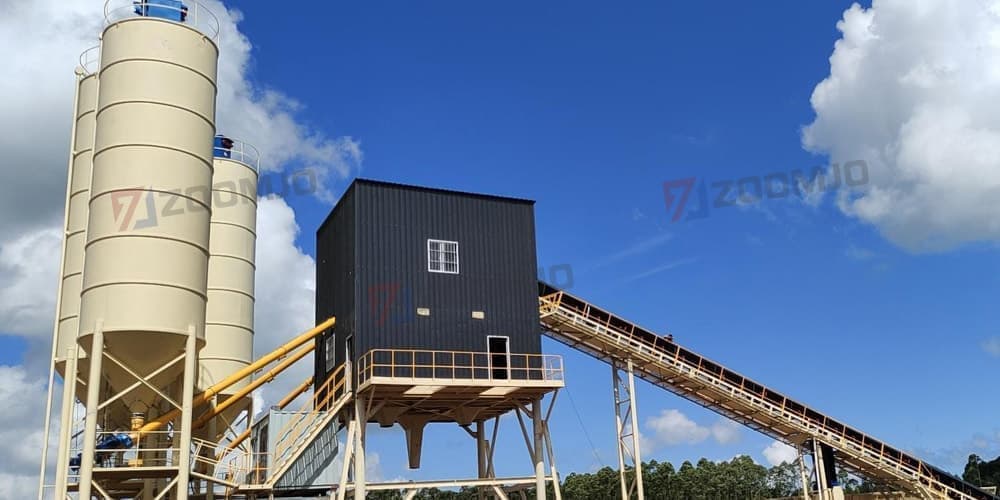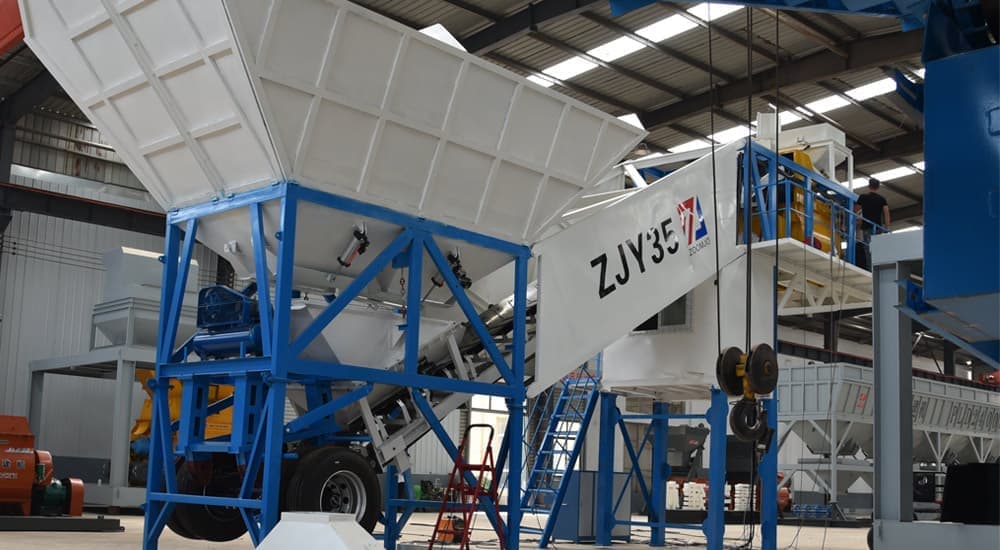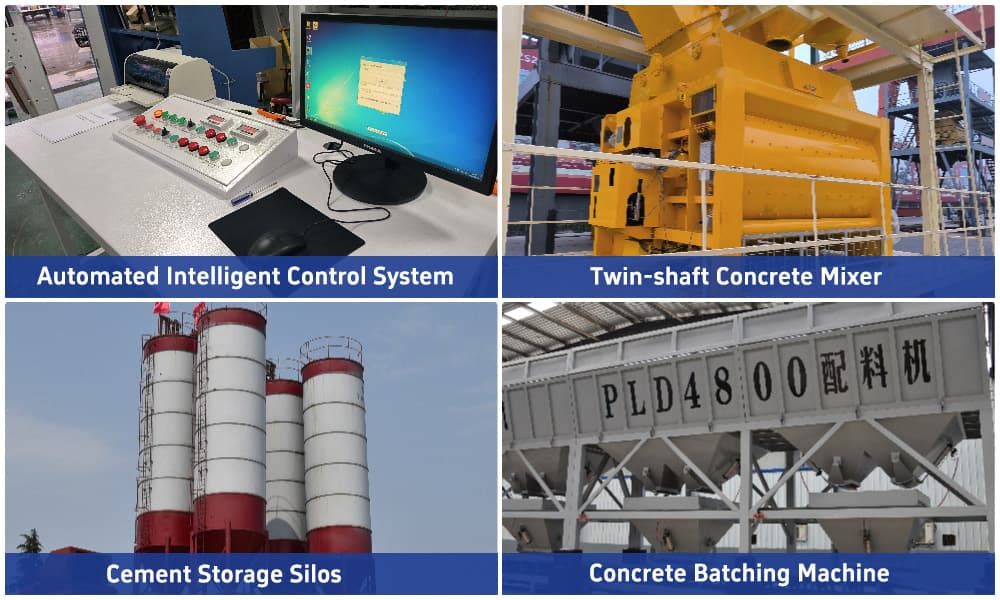Ready Mix Concrete Plant Cost

Ready-mixed concrete plays a vital role in modern construction, and investing in a ready-mix concrete mixing plant (RMC Plant) is an important business decision. "How much does it cost to build a Ready Mix Concrete Batching Plant?" This is the question that is on the top of the minds of many potential investors. How much does a ready-mix concrete batching plant really cost? This article will provide an in-depth analysis of the costs involved in setting up and operating a ready-mixed concrete batching plant, providing investors with a comprehensive and clear cost analysis to help them make informed investment decisions.

Cost analysis of ready-mixed concrete batching plant
The total investment cost of ready-mixed concrete mixing plant mainly includes three major categories: equipment purchase, site construction and operation. The following is a detailed analysis of the main components and influencing factors of the cost of ready-mixed concrete mixing plant:
Equipment Purchase Cost
Equipment purchase cost is the largest part of the initial investment of ready-mixed concrete mixing plant, and it is also the key factor affecting the overall investment amount. The cost of equipment varies greatly depending on the type of plant, production capacity (capacity), level of configuration, and brand chosen, with the price range typically ranging from US$25,000 to US$360,000 or more. It should be emphasised that this price range is indicative only and the actual price will be accurately accounted for based on the user's specific needs and configuration options.
In order to provide a clearer picture of the relationship between equipment cost and various factors, we will go into more detail:
Divided by production capacity:
-
Small mixing plant (capacity <90m³/h): relatively low investment, usually suitable for small construction projects, rural road construction, prefabricated component factories and other projects with little demand for concrete, also suitable for investors with limited initial investment budget. The structure of this type of mixing plant is relatively simple and the degree of automation may be low.
-
Medium-sized mixing plant (capacity 90-120m³/h): moderate investment, suitable for medium-sized construction projects, bridge construction and other projects. The configuration of this type of mixing plant is relatively perfect, and the production efficiency and concrete quality are better guaranteed.
-
Large-scale mixing plant (capacity of 120-270m³/h and above): higher investment, suitable for large-scale infrastructure construction, high-rise buildings, large-scale commercial concrete production enterprises and other projects with huge demand for concrete. This kind of mixing plant has a high degree of automation and high production efficiency, which can meet the production demand of high grade and special concrete, and can better realise the scale efficiency.
Divided by mixing plant type:
-
Fixed mixing plant: The equipment is fixedly installed on the foundation, with a large one-time investment, but with high production efficiency and good stability, suitable for long-term and large-scale concrete production.
-
Mobile concrete mixing plant: the main equipment of the mixing plant is installed on a movable chassis, which is convenient for relocation and transfer, and the investment is relatively flexible, which is suitable for projects with short construction period and unfixed site.
-
Compact mixing plant (also called engineering mixing plant): simple structure, minimum investment, mainly used for temporary concrete mixing in small engineering sites, with a low degree of automation.
Key equipment composition and impact: The core equipment of ready-mixed concrete mixing plant includes:
-
Mixing machine: It is the core component of concrete mixing, including forced mixer (such as double horizontal shaft forced mixer ) and self-falling mixer. Forced mixer has high mixing efficiency and good concrete quality, but the price is also higher.
-
Batching system: It is responsible for the precise measurement and proportioning of various raw materials (aggregate, cement, water, additives, etc.). The accuracy of batching and the degree of automation directly affect the quality of concrete and production efficiency.
-
Conveying system: conveying all kinds of raw materials to the mixing machine, and conveying the mixed concrete to the mixer truck. Conveying distance, conveying capacity and conveying method (belt conveyor, inclined belt conveyor, screw conveyor, etc.) will affect the cost.
-
Control system: Control the operation of the whole mixing plant, including batching, mixing, unloading and so on. The higher the degree of automation and intelligence, the higher the cost of the control system, but it can improve the production efficiency, reduce the labour cost and reduce human error.
Therefore, when evaluating the cost of equipment purchase, investors need to consider the project scale, concrete demand, project location, budget constraints and other factors to choose the right type of mixing plant, production capacity and equipment configuration. It is recommended to communicate with a number of equipment suppliers to obtain detailed quotations and technical solutions for a comprehensive comparison and evaluation in order to make the best investment decision.

Project site cost
Project site cost is one of the key factors affecting the total investment in ready-mixed concrete mixing plant, which is not only about the initial investment, but also has a long-term impact on the later operating costs. The site cost is mainly composed of the following aspects:
1. Land acquisition or lease costs:
This is the most significant component of site costs and its amount is affected by a combination of the following factors:
-
Geographical location: Land prices are usually higher near urban centres, transport hubs or economically developed areas, while remote or industrial sites are relatively cheaper. Choosing a location close to the source of raw materials or the target market can reduce transport costs to some extent, but may need to be weighed against the difference in land prices.
-
Land area: The size and production capacity of the batching plant determines the land area required. The larger the production capacity, the larger the required raw material yard, equipment installation space, vehicle turnaround space, etc., thus requiring a larger land area and a corresponding increase in cost.
-
The nature of land ownership: The nature of land ownership, including state-owned land, collective land, etc., different nature of the land in the purchase or lease, cost standards and other aspects of the differences. Acquisition of land requires a one-time payment of a higher cost, but has the right to use it in perpetuity; leased land requires regular payment of rent, which is relatively low in financial pressure, but there are issues such as the term of the lease and the renewal of the lease.
-
The nature of land use: The nature of land use determines its use and related approval procedures. Industrial land is usually used for the construction of mixing plant, but need to comply with the relevant planning and environmental requirements.
2. Site levelling and infrastructure construction costs:
After acquiring the land, site levelling and infrastructure construction are required, and this part of the cost includes:
-
Site Clearance: Clearing of vegetation, debris, etc. from the site.
-
Foundation treatment: Reinforcement of the foundation according to geological conditions to ensure stable operation of the equipment.
-
Ground Hardening: Concrete hardening of the site to withstand the weight of the equipment and the crushing of vehicles.
-
Road construction: Build the roads in and out of the mixing plant and the roads in the site to facilitate the passage of vehicles and the transport of materials.
-
Construction of water supply and power supply facilities: including laying water supply pipes, installing water meters, constructing power distribution rooms, erecting wires and cables, etc., in order to meet the production and living water and electricity needs of the mixing plant.
-
Drainage system construction: construction of drainage ditches, sedimentation tanks, etc., in order to deal with rainwater and production wastewater, and prevent the site from waterlogging and environmental pollution.
-
Construction of wall or fence: For security and management needs, it is usually necessary to build a wall or fence around the site.
Comprehensive consideration of site costs:
When selecting a site, all of the above aspects need to be considered and a detailed cost estimate made. The following are some suggestions:
-
Choosing the right location: Weigh up land prices, transport costs and market coverage.
-
Reasonable planning of site layout: Optimise the arrangement of equipment and materials to improve site utilisation and reduce unnecessary land occupation.
-
Consider environmental protection requirements: Understand local environmental regulations and standards in advance, and reserve enough space for environmental protection facilities.
By comprehensively analysing and reasonably planning the project site costs, we can effectively control the investment costs and lay a good foundation for the long-term operation of the mixing plant.
Operation Cost
The operation of a ready-mixed concrete mixing plant involves a number of costs, including water and electricity costs, staff wages, raw material procurement costs and transport costs. These costs must be fully considered in the upfront investment budget to ensure the sustainability of the operation.
In addition, there may be additional costs incurred during the operation of the mixing plant, such as equipment maintenance and repair costs, licences and permits. These additional costs also need to be fully anticipated in the budget to avoid financial pressure at a later stage. Reasonable cost control and budget management will help ensure the long-term stable operation of the mixing plant.
Common strategies to control the cost of ready mix concrete batching plant
Controlling costs is key to the successful operation of a ready-mixed concrete plant and is directly related to profitability and market competitiveness. The following common strategies, covering everything from raw material procurement to operations management, can help effectively reduce and control costs:
01. Optimising the use of raw materials
Raw materials (cement, sand, gravel, water, etc.) are the largest part of ready-mixed concrete production costs. Optimising the use of raw materials is at the heart of cost control:
-
Accurate batching: The use of automated batching systems ensures accurate material proportions, minimises waste and ensures consistency of the concrete mixture.
-
Alternative materials: Actively explore and use alternative materials such as fly ash, slag, recycled aggregates, etc., to reduce the amount of cement under the premise of guaranteeing the performance of concrete, thus significantly reducing costs. This also favours environmental protection and sustainable development.
-
Optimisation of mix ratio: Optimise the design of concrete mix ratio according to the actual needs of the project, and minimise the amount of cement under the premise of meeting the requirements of strength and durability.
-
Reduce loss: Strengthen the storage and management of raw materials, take measures against moisture, rain and pollution, and reduce the loss caused by improper storage. At the same time, optimise the production process to reduce losses during transportation and loading and unloading.
02. Improve energy efficiency
Energy costs (e.g. electricity and fuel) are important expenses in operations. Energy consumption can be significantly reduced by the following measures:
-
Renewable energy: Install solar panels or other renewable energy systems to reduce long-term energy costs.
-
Equipment maintenance: Ensure that equipment is running efficiently and avoid wasting energy due to aging equipment.
03. Simplify supply chain management
Efficient supply chain management can significantly reduce raw material and logistics costs:
-
Work with reliable suppliers: establish long-term relationships, negotiate better prices and ensure timely delivery of raw materials.
-
Bulk purchasing: Obtain discounts through bulk purchasing, but manage inventory wisely to avoid material deterioration or waste.
-
Localise your supply chain: Prefer local suppliers to reduce transport costs and time.
04. Automated production process
Automation technology is a central tool for cost reduction in modern ready-mix concrete plants:
-
Automation equipment: optimises the material handling, mixing and batching processes to improve production accuracy and consistency.
-
Reduced labour costs: Reduces reliance on manual operations while avoiding wasted materials or production delays due to human error.
-
Improve production efficiency: shorten production cycle times and increase overall capacity through automated systems.
05. Implement preventive maintenance
Maintenance and upkeep of equipment is essential to avoid unexpected breakdowns and costly repairs:
-
Preventive maintenance programme: regular inspection, cleaning and replacement of worn parts ensures that the equipment is always in optimum operating condition.
-
Extended equipment life: Maintenance reduces ageing and damage to equipment and reduces replacement costs.
-
Reduce downtime: avoid production interruptions due to equipment failure and ensure production continuity.
Is a ready mix concrete batching plant worth investing in?
Whether it is worthwhile to invest in ready-mixed concrete batching plant requires comprehensive consideration of various factors, and there is no absolute answer, which must be analysed and evaluated exhaustively according to the specific situation.
Overall, investing in a ready-mixed concrete batching plant is a business opportunity worth considering. Although the initial investment is relatively high, ready-mixed concrete plants are expected to bring considerable financial returns as the demand for high-quality concrete in the construction industry continues to grow, and as operational efficiencies are realised through effective management. Potential investors are advised to fully evaluate the various cost factors and develop a thorough business plan to ensure sustainable profitability of the project before making a decision.
Before deciding to invest, it is important to conduct in-depth market research and rigorous feasibility analysis, which should cover the following aspects:
-
Market research: In-depth understanding of the local construction and infrastructure development trends, comprehensive assessment of the scale of market demand and competitive landscape, including existing competitors' production capacity, market share, product types and pricing strategies.
-
Site Selection: It is important to select a site that is easily accessible and close to raw material sources and target markets. At the same time, full consideration needs to be given to factors such as land costs, geological conditions, hydrological conditions and local environmental requirements.
-
Equipment selection: According to the expected production scale, product type (e.g. ordinary concrete, special concrete, etc.) and the specific needs of the project, select the appropriate production equipment. When selecting the equipment, not only the performance and technical parameters of the equipment should be considered, but also the energy consumption, maintenance costs, automation and the supplier's after-sales service capability should be comprehensively assessed.
-
Raw material supply: Ensuring a stable and reliable supply of raw materials is the foundation of production operations. It is necessary to establish long-term and stable cooperative relationships with reputable and well-qualified raw material suppliers and sign long-term supply contracts as far as possible in order to ensure a stable supply of raw materials and reasonable prices, and reduce the risk of raw material price fluctuations.
-
Cost estimation: Make a detailed estimation of the investment cost (including land purchase or lease, plant construction, equipment purchase, environmental protection facilities, etc.) and operation cost (including raw material purchase, energy consumption, labour wages, transport costs, equipment maintenance, management costs, taxes, etc.) of the project. On this basis, comprehensive financial analyses are conducted, including break-even analysis, payback period analysis, net present value analysis, internal rate of return analysis, etc., in order to comprehensively assess the return on investment and profitability.
-
Environmental protection assessment: Fully understand the local environmental protection regulations and emission standards, and conduct professional environmental impact assessment to ensure that the project meets the environmental protection requirements during construction and operation, so as to avoid delays or stoppage of the project due to environmental protection issues.
Through these detailed analyses and assessments, investors can have a more comprehensive understanding of the potential benefits and risks of ready-mixed concrete batching plant investment projects, so as to make wise investment decisions.
Types of Ready Mix Concrete Batching Plants to choose from
There are various types of ready-mixed concrete mixing plant to choose from according to different application scenarios and production requirements. The following is a detailed introduction to several common types, hoping to help you better understand the characteristics of various mixing plants, so as to make a more appropriate choice.
1. Mobile concrete batching plant
-
Model: YHZS25-YHZS90
-
Capacity: 25-90m³/h
-
Features:
-
High mobility: the whole station adopts modular design, compact structure, easy to disassemble and transport, and can be quickly transferred to different construction sites.
-
Quick installation: the installation process is simple and quick, no need for complex foundation construction, greatly shortening the construction period.
-
Wide applicability: It is suitable for projects with short construction period, restricted site or frequent transfer, such as highway, railway, bridge and other field construction.
-
Relatively low cost: lower initial investment compared with fixed mixing plant.
-
Disadvantage: The output is relatively small, not suitable for large-scale or long-term projects.
2. Hopper lifting concrete mixing plant
-
Model: HZS25-HZS75
-
Capacity: 25-75m³/h
-
Features:
-
Simple structure: adopting hopper elevator for aggregate conveying, simple structure, easy maintenance.
-
Small footprint: Compared with belt-type mixing plant, the footprint is smaller.
-
Lower cost: the investment in equipment is relatively low.
-
Disadvantage: The conveying efficiency is relatively low, not suitable for large output production.
3. foundationless concrete batching plant
-
Model: ZJM25-ZJM120
-
Capacity: 25-120m³/h
-
Features:
-
Easy installation: no need to carry out complicated foundation construction, only need to make simple levelling of the site for installation, greatly shortening the installation period and reducing the installation cost.
-
Easy to move: Although it is not as convenient as mobile mixing plant for frequent transfer, it is more mobile than fixed mixing plant.
-
Strong applicability: It is suitable for projects with limited site conditions or those that need to be put into use quickly.
-
Disadvantage: The production capacity is smaller than that of the stationary mixing plant, and the stability may be slightly lower than that of the stationary mixing plant.
4. Belt Type Concrete Batching Plant
-
Model: HZS60-HZS240
-
Capacity: 60-240m³/h
-
Features:
-
High conveying efficiency: adopting belt conveyor for aggregate conveying, high conveying efficiency, suitable for large output production.
-
High metering precision: Usually adopts cumulative metering method, high metering precision.
-
High degree of automation: it can realise full automatic control and high production efficiency.
-
Disadvantages: large footprint, relatively high investment in equipment.
5. Stationary concrete mixing plant
-
Model: HZS25-HZS240
-
Output: 25-240m³/h (even larger)
-
Features:
-
High production capacity: Strong production capacity can meet the demand of large or long-term engineering projects.
-
High stability: equipment fixed installation, stable and reliable operation, high metering precision.
-
Flexible configuration: It can be flexibly configured according to different production requirements, such as choosing different types of mixing hosts, batching systems and control systems.
-
High degree of automation: advanced automation control system is usually adopted, high production efficiency and low labour cost.
-
Disadvantages: Higher initial investment, not suitable for projects requiring frequent transfers.
6. Dry Concrete Batching Plant
-
Model: HZS25-HZS120
-
Capacity: 25-120m³/h
-
Features:
-
Mixing method: Only dry materials such as cement, aggregate and admixture are mixed without adding water.
-
Transportation: The mixed dry materials are transported to the construction site by tanker trucks, and then water is added for mixing.
-
Scope of application: It is suitable for the projects which do not require high performance of concrete, the transport distance is far or the construction site does not have the mixing conditions.
-
Disadvantages: It is difficult to control the quality of on-site mixing, and the requirements for transport and on-site management are high.
7 wet concrete mixing plant
-
Model: HZS25-HZS240
-
Capacity: 25-240m³/h
-
Features:
-
Mixing method: All raw materials (including water) are fully mixed in the mixing plant to produce finished concrete.
-
Transportation: Finished concrete is transported directly to the construction site by mixer truck.
-
Scope of application: It is the most widely used type of concrete mixing plant at present, suitable for various types of projects.
-
Advantages: Strict quality control of concrete, high production efficiency.
Which type of ready-mixed concrete mixing plant to choose, need to be based on specific project requirements, site conditions, investment budget and production scale and other factors for comprehensive consideration. It is recommended to conduct sufficient market research and technical consultation before investment, and choose the type of mixing plant that best suits your needs.
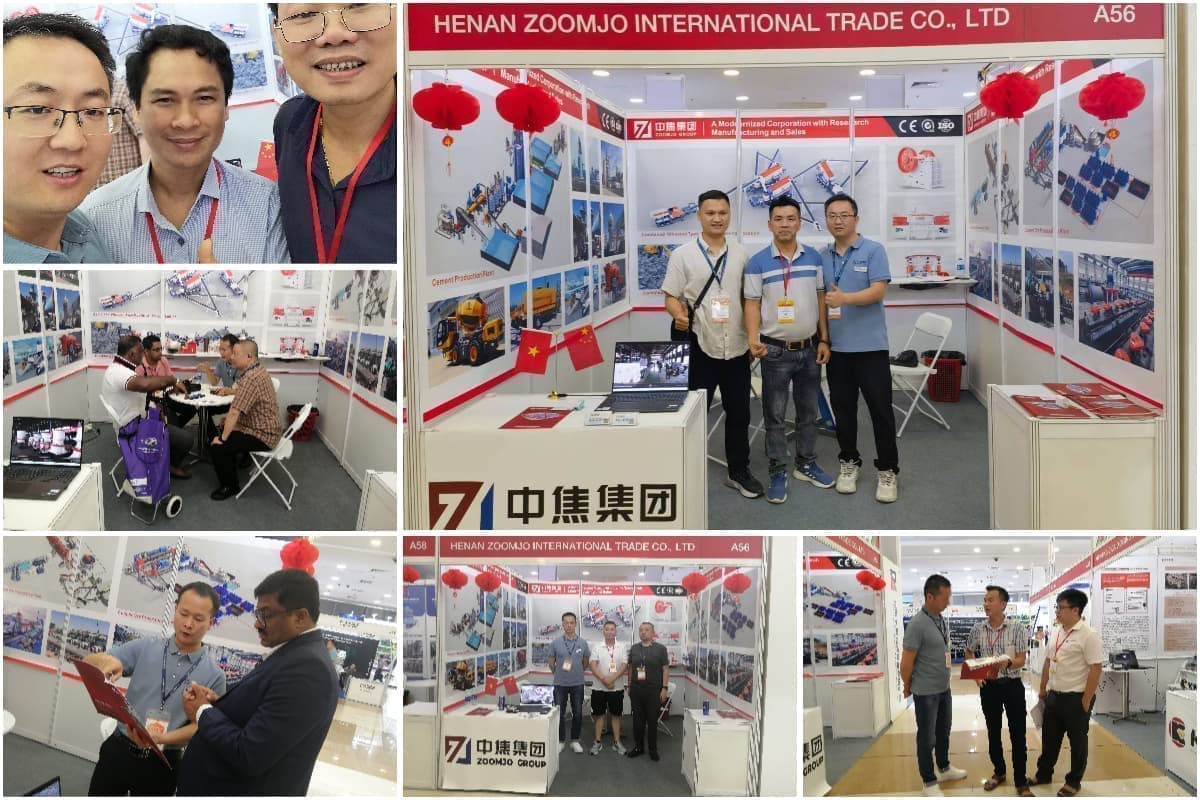
Price list of different ready mix concrete batching plants
Based on the latest market research, we have compiled the following approximate price ranges for various types of ready mix concrete batching plants. It should be specially emphasised that these prices are for reference only and do not constitute an actual quotation. The actual price will be affected by a combination of factors, so please be sure to contact the manufacturer or supplier for an accurate quote.
| Type | Model | Capacity (m³/h) | Price Range (US$, for reference only) |
|---|---|---|---|
| Mobile Concrete Batching Plant | YHZS25-90 | 25-90 | 35200-129800+ |
| Stationary Concrete Batching Plant | HZS25-240 | 25-240 | 32180-251500+ |
| Foundationless concrete batching plant | ZJM25-120 | 25-120 | 38450-187500+ |
| Belt type concrete batching plant | HZS60-240 | 60-240 | 68820-280700+ |
| Hopper lifting type concrete batching plant | HZS25-75 | 25-75 | 35800-138500+ |
| Dry Concrete Mixing Plant | HZS25-120 | 25-120 | 33100-210650+ |
| Wet Concrete Mixing Plant | HZS25-240 | 25-240 | 35700-271000+ |
About ZOOMJO
ZOOMJO Group is one of the leading manufacturers of concrete mixing plants in China with a global reputation for its products.ZOOMJO specialises in the development, manufacturing and servicing of concrete mixing plants and is committed to providing customers with comprehensive solutions in order to tailor the most suitable concrete mixing plant to their specific needs and to ensure the successful implementation of each project.
ZOOMJO produces a wide range of concrete mixing plants, including: stationary concrete mixing plants, mobile (portable) concrete mixing plants, belt concrete mixing plants, hopper concrete mixing plants, dry concrete mixing plants, wet concrete mixing plants, and so on. These plants are designed with advanced technology to meet the needs of a wide range of projects, regardless of size.
Why choose ZOOMJO?
ZOOMJO's concrete mixing plants are trusted by customers for the following key benefits:
-
High-quality materials: ZOOMJO uses top-quality materials to ensure the durability and excellent performance of its equipment.
-
Long component life: plant components are designed for long life, reducing the need for frequent maintenance.
-
Tailor-made solutions: ZOOMJO offers customised concrete plant solutions according to specific project requirements.
-
Comprehensive after-sales support: ZOOMJO offers excellent after-sales service to ensure optimum plant performance and reliability.
-
Plants sold worldwide: ZOOMJO has manufactured and exported concrete mixing plants to more than 100 countries, earning an excellent reputation for quality and reliability.
Frequently Asked Questions (FAQ) about Ready Mix Concrete Batching Plant
Q: What is a ready mix concrete batching plant?
A: A ready-mix concrete batching plant is a facility used to produce ready-mix concrete. It produces concrete in a controlled environment by accurately proportioning raw materials such as cement, sand, gravel, water and admixtures, according to the mix design required for the project. The produced concrete is then transported to the construction site via transport vehicles for immediate use.
Q: Common types of ready-mix concrete batching plants
A: Ready-mixed concrete batching plants can be classified into the following types according to their functions and uses:
-
Stationary Batching Plant: suitable for long-term and large-scale projects, usually installed in a fixed location with high production capacity.
-
Mobile batching plant: suitable for projects that require frequent changes of construction sites, easy transport and quick installation.
-
Dry mixing plant: all dry ingredients are mixed and transported to the site, then water is added for mixing.
-
Wet mixing plant: all materials are mixed in the plant and usable concrete is produced directly.
-
Belt mixing plant and hopper mixing plant: classified according to the different ways of material conveying, belt type is suitable for large-scale production and hopper type is suitable for small-scale projects.
Q: What are the advantages of ready-mix concrete plants?
A: Investing in and using a ready-mixed concrete plant has the following key advantages:
-
High quality and consistency: production in a controlled environment ensures consistent quality and strength of concrete.
-
Time and labour savings: eliminating the need for on-site mixing, reducing construction time and labour costs.
-
Reduced waste: Accurate batching and mixing design reduces raw material waste.
-
Environmentally friendly: Reduces environmental impact by reducing dust and raw material waste.
-
Flexibility: Concrete formulations can be customised to meet the specific requirements of different projects.
Q: How to choose ready-mixed concrete mixing plant?
A: Choosing the right ready-mixed concrete mixing plant requires comprehensive consideration of the following factors:
-
Production demand: choose the right production capacity according to the project scale and concrete demand.
-
Type selection: Fixed type is suitable for long-term projects, while mobile type is suitable for short-term or multi-location projects.
-
Degree of automation: Highly automated equipment can increase efficiency and reduce long-term operating costs, despite higher initial costs.
-
Equipment performance: Evaluate the equipment's durability, energy consumption, maintenance costs and the supplier's ability to provide after-sales service.
-
Budget and cost: Select the most cost-effective equipment based on budget and consider long-term operating costs.
Q: Is it cost effective to install a used RMC dosing plant?
A: The installation of a used ready-mix concrete batching plant may be cost-effective, but the following points need to be noted:
-
Lower initial cost: Used equipment is typically purchased for 30-50% less than new equipment, making it suitable for companies with limited budgets.
-
Condition of the equipment: The equipment needs to be carefully checked for operating condition, wear and tear, and compliance with current technical requirements.
-
Maintenance costs: Used equipment may require more maintenance and repairs and the cost of long-term use needs to be assessed.
-
Technical support: Ensure that the supplier is able to provide the necessary technical support and supply of spare parts.
-
Environmental compliance: Check that the equipment complies with local environmental regulations and emission standards.
If the used equipment is in good conditionAnd in line with project requirements, the installation of a second-hand batching plant can significantly reduce initial investment costs while meeting production needs.

 English
English 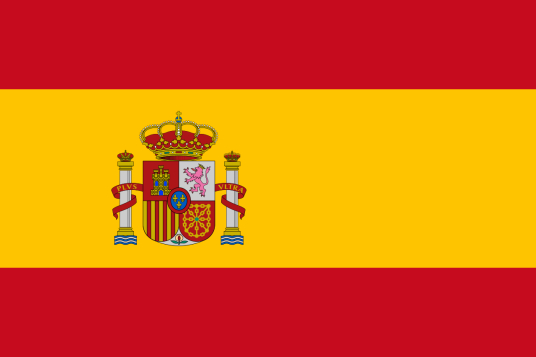 Español
Español  简体中文
简体中文  Pусский
Pусский  українська
українська 